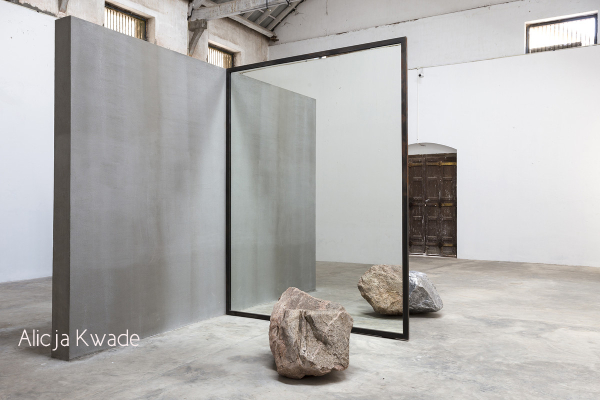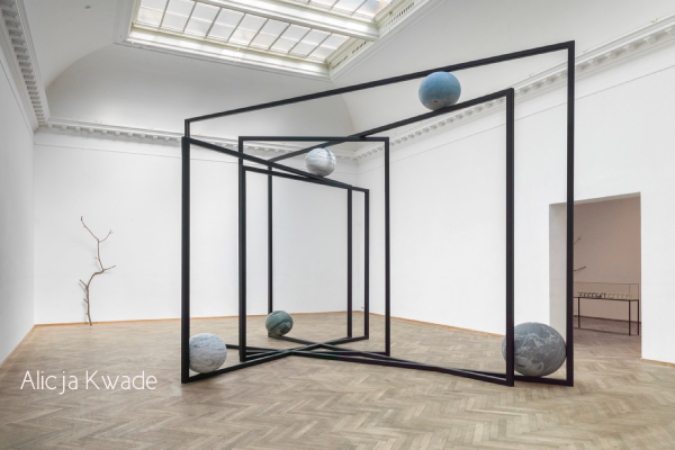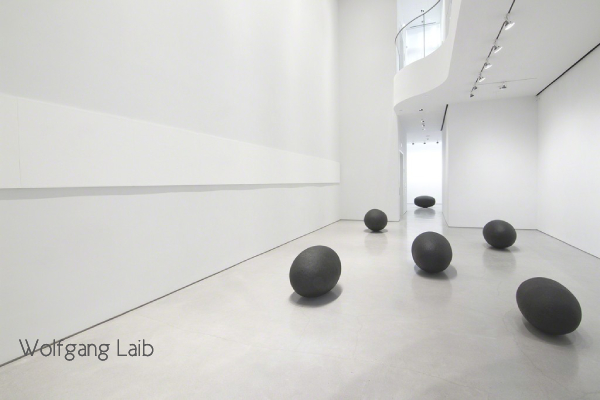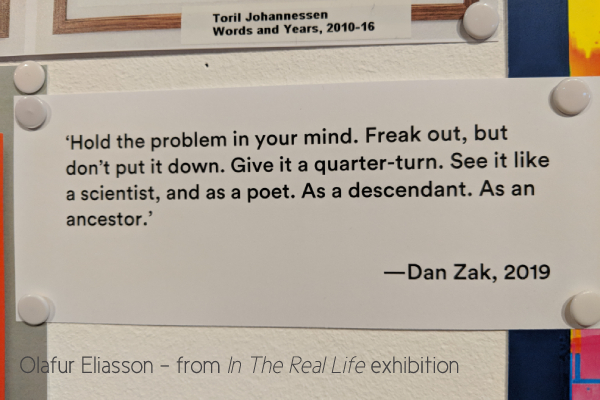Eerie _things to bring to Mars_
“Storying cannot any longer be put in the box of human exceptionalism”.1
produced by: Kata Popovic / ketworks.com
Introduction
Eerie is an interactive sonic installation that highlights the “innocent” human touch as an element of destruction. Silent witnesses of our annihilation, the custom made instruments - wood, fur, and rocks are not silent anymore. They invite the participant to play with them and modulate the natural sounds towards the sounds of unwelcoming and eerie Martian environments. This is a piece about paying attention to nature before it is gone.
Concept and background research
This work is a paradox, just like the one we are living in. We are actively seeking a new ecosystem, while (even more actively) destroying the current one.
Woods tell of birds
Rocks speak of the sea
The wolf howls at the wind
Humans are the only ones talking about themselves
And Mars.
Yes, humans seem to need another planet.
And are the only ones who do.
How do we get out of the pattern of our everyday doings and start to think and act in “sympoesis”2 with humans and non-humans? Nature is not a theoretical and ecological descriptive but an everyday presence we live in, interact with, pass by or destroy. We do not pay attention to it - it is there and we "know" its features. However, if the duck started to bark you would hardly remember the dogs it was with. Changing the "usual" properties of a (natural) object we got used to, make it noticeable again, and in this case, has the act of touching stand out. In Eerie, all that looks familiar does not sound like it anymore. And making it odd gives it a potent voice. In the times when it is necessary to tell new stories with a different hero, Haraway cites Latour’s argument:
“...we can call all our narrations “geostories”, in which “all the former props and passive agents have become active without, for that being a part of a giant plot written by some overseeing entity.3
The absence of visuals was a conceptual decision, as we are surrounded by a vast amount of visual information, daily. Eerie focuses on the haptic and sonic experiences, as universal communicators that carry layers of meaning and “get us to truly listen”.
Interaction
Touch is the first thing on your mind when the objects are laid in front of you on the table. The room is filled with the sounds of nature, it all seems serene. My first plan was to build controllers, but as the sound evolved I have realized that I was building - instruments. The only thing is - once you touch the “natural” instruments, they give out sounds that are strange and strangely attractive.
“Touch, as it is used in technology, lacks a certain subtly that is readily found in most tools and instruments. The New Musical Interfaces that last tend to be simpler and are approached more like instruments than interfaces." 4
And we play, and in all that beautiful, joyful play, a dark truth is hidden. Nature is made to be our toy and something we use and enjoy almost thoughtlessly.5
To the attentive ear - each time the interaction happens, it “destroys” the sounds of nature that are otherwise perpetually playing. The natural sound is firstly downsampled, faded out and then the sound of the instrument emerges. Also, the materials used to build the instrument are fragile as nature itself - they get destroyed by use. The fur flies around, the wood gets chipped and the rocks get scratched on the bottom. By the third day, I had to replace the fur sensor with the new one.
The feedback I got from the audience was that they felt the immediacy, and responsiveness of objects with ease and they were inviting them to play - they felt welcomed to touch the objects. Sounds were complimenting the texture of the objects and the “invisible electronics” were intriguing. A few people reported to me that they went back to play the instruments and ‘get lost’ or ‘forget the world’.
Design
The installation’s look borrows from the design of an altarpiece or a setting in a natural history museum display of what was left of us after the 6th extinction (and no one even remembers how things sounded like). The dark cloth is covered with thin black rubber a couple of reasons - to fully conceive the electronics, to provide good insulation and to give a softer touch to the interactions when using the instruments. One of the intriguing things that I have noticed people were looking to discover was - how does this work? Is it the table playing? Where are the wires? The hidden electronics approach was done on purpose - to give the participant the feeling of play with purely natural objects.
In the design of the printed instructions (that were placed on a note stand) the retro fonts and look from the anatomy sketches from the 16th century were used to create this retro-future paradox of seeing the human race from the point in time in which we are (hypothetically) gone.
The process
Building the sensors
The work on this piece started 3 months ago when I decided to further pursue the concept that I have looked into all year long: the possibilities of giving the voice to the natural objects, the silent witnesses. The process went in two parallel lines - one was going deeper into sound creation and Max MSP, the second one was building custom sensors out of natural objects. The objective was to create a controller that is keeping as many natural properties as possible and is responsive with minimal visible intervention in the material.
During the research, many techniques were tried - including sewing wood with conductive thread or trying to “plant” thread within the extra dog fur. The conductive thread proved to be too weak for this particular case so the thinnest copper wires (0.01mm) were used as a thread that the fur was sewn with and also “stuffed” with. This was an interesting process since its goal was to have the hand of the user always touching at least one wire, and at the same time have the wire be well hidden so as not to break the texture of the fur. This sensor took several days of sewing to get right.
Rocks were the biggest surprise - they have proved to be conductive. With the same objective of not intervening within the material, different techniques were tried and one of the experiments, when the rock used for testing was painted with conductive paint, proved to be returning the right response. Concluding that I will have to “paint over” the rocks (and break the objective of least intervention) I made another experiment and painted only the bottom of the rocks. Amazingly so, the rocks proved to be conductive so that no other contact was needed, but the one on the bottom and the capacitance of your body was naturally transmitted. However, the choice of the rock mattered - the garden rock did not have a relatively stable range of values for different touches.
The wood sensor was created with the microphone in an attempt to translate the stroking or scratching movement (feeling of the texture) into sound. The conductive thread did not work, so it proved to be the best to send the sound signal to MaxMSP and then modulate it towards the desired sound.
Creating the Sound
The method for the sound was - staying away from melodic and pleasant sounds (although I was constantly tempted) but creating an atmospheric set of sounds that are on the border of being unpleasant: the sounds that resembled instruments, machines, quakes, void places with no life. Since the atmosphere on Mars is very thin, and the sound dies quickly (much faster than on Earth) - each sound was made to be rather short, without a chance to develop into a chord or a melody. I was not after the recreation of the actual sounds from Mars but my goal was to create eerie, uncanny sounds that are ‘almost familiar’ and ‘almost pleasant’ but still resemble ‘the other world’. Also, the sound properties were made to match the properties of the objects the user was touching - higher pitches for the fur or deeper, more oblique sounds for the rocks.
The sounds were created using amplitude and frequency modulation, speeded up samples from Martian research ESA files, as well as from the Earth and weather open data from Mars. The fur sound has a sample of a speeded-up meteor rain in it. The wood sound has a sample resembling the ice cracking sound of the Korolev ice crater from Mars. As for the rocks, the sound of the wind was created using the weather open data sets from Mars, and within the 9 sounds created for the rocks, one had the sample of the Mars rover going over gravel in it.
Since this is my first audio installation, a significant part of my learning was getting to know the nature and properties of sound - so that I was able to create them as well as modulate them.
The technical process
The first attempt to use the potentiometer proved not to be suitable for the complexity of interactions I was looking for. After consultations with Evan Raskob who suggested the Touche (capacitive touch sensor) and after a relatively easy start with building the sensor the journey to get the right values and to have them stabilized begun. The capacitive sensor is very sensitive and can easily give you very jumpy results - it also changes the values with the different body capacitances.
Several layers of normalizations were used to get the values to be as stable as possible (eg. determining a larger sample of values and reporting a normalized value vs. reading each value and having a hard-to-control range). This was instrumental so that the values coming into MAX did not trigger many instruments (or sounds or changes) all at once, but one by one, and when the interaction stops, to not have them go back through the values (triggering all of these again) but to drop below the threshold as fast as possible.
Likewise, in Max MSP the sounds were created with the nature of interaction in mind - shorter touch variants for rocks (9 sounds for 3 instruments, triggered randomly) and value variations to modulate the amplitude, frequency and buffer samples for the fur sensor.
Self-evaluation
One of the most important learnings from building this piece was how to build an interaction by building better control systems in code- so that the interaction is instantaneous, smooth and precise all at the same time. The time planned for the project proved to be enough for the desired outcome. With the greater amount of time dedicated to experimenting with the sound, I would get to more complex sounds, a much greater variety of the audio output as well as to upgraded controls (timing and playback variants) which is what I plan on doing in the future.
Future development
Next steps will include creating more complex sounds that are built on multiple interactions (e.g. - the sounds of two hands, or sounds made by specific order of the instruments played). Also, as some of the players of Eerie suggested that these instruments can be used for live performances. I am also looking into public space versions of the "silent witnesses" installations as I am going to create more work within the same concept during the art residency in Istanbul in October and November 2019.
Inspirational artworks
References
1. Haraway, Donna J. (2016), Staying With The Trouble, Duke University Press, Durham, and London
2. Ibid
3. Ibid
4. Honigman C., Hochenbaum J., Kapur A., 2014, Techniques in Swept Frequency Capacitive Sensing: An Open Source Approach. Proceedings of the International Conference on New Interfaces for Musical Expression, [online], accessed August 2nd, 2019.
5. Haraway, Donna J. (2016), Staying With The Trouble, Duke University Press, Durham, and London
Readings
Morton, T. (2018), Being Ecological, Penguin Random House, UK
Morton, T. (2013), Hyperobjects, University of Minnesota Press, Minneapolis
McLuhan, M. and Fiore, Q. (1967), The Medium is the Massage, Penguin Books, London
Artistic and creative inspiration
The capacitive touch sensor and sound references
The Arduino code was adopted from the Touche "Illutron take on Disney style capacitive touch sensor using only passives and Arduino Dzl 2012" Sources: (for the circuit) and this one (for understanding the graph, research papers, and examples) https://www.instructables.com/id/Touche-for-Arduino-Advanced-touch-sensing/
Building soft controllers EJ Tech flexible MIDI controller
Kadenze course Programming Max: Structuring Interactive Software for Digital Arts
Virtual Sound (Maurizio Giri) Easy Pieces
Delicious Max Patches tutorials
MUST 1102 tutorials
Examples from Atau Tanaka's MA Computational Art class Special Topics in Performance and Installation and Cycling74's own learning tutorials and patches
Sounds
ESA - European Space Agency’s resources were the most important pool of information on the atmosphere on Mars. With its open data sets, images and sounds on Soundcloud that the artists are encouraged to use, it was an instrumental part of the sounds that were created in the end.
Hebes Chasma image used for the exhibition flyer (credited)
Special thanks go to Valeria Radchenko, Harry Morley, Chris Speed, Christina Carpodini, Julia Makivich, Aki Rodic and Antonio Ankajcan who were always there to inspire or to help out during this process.






































































